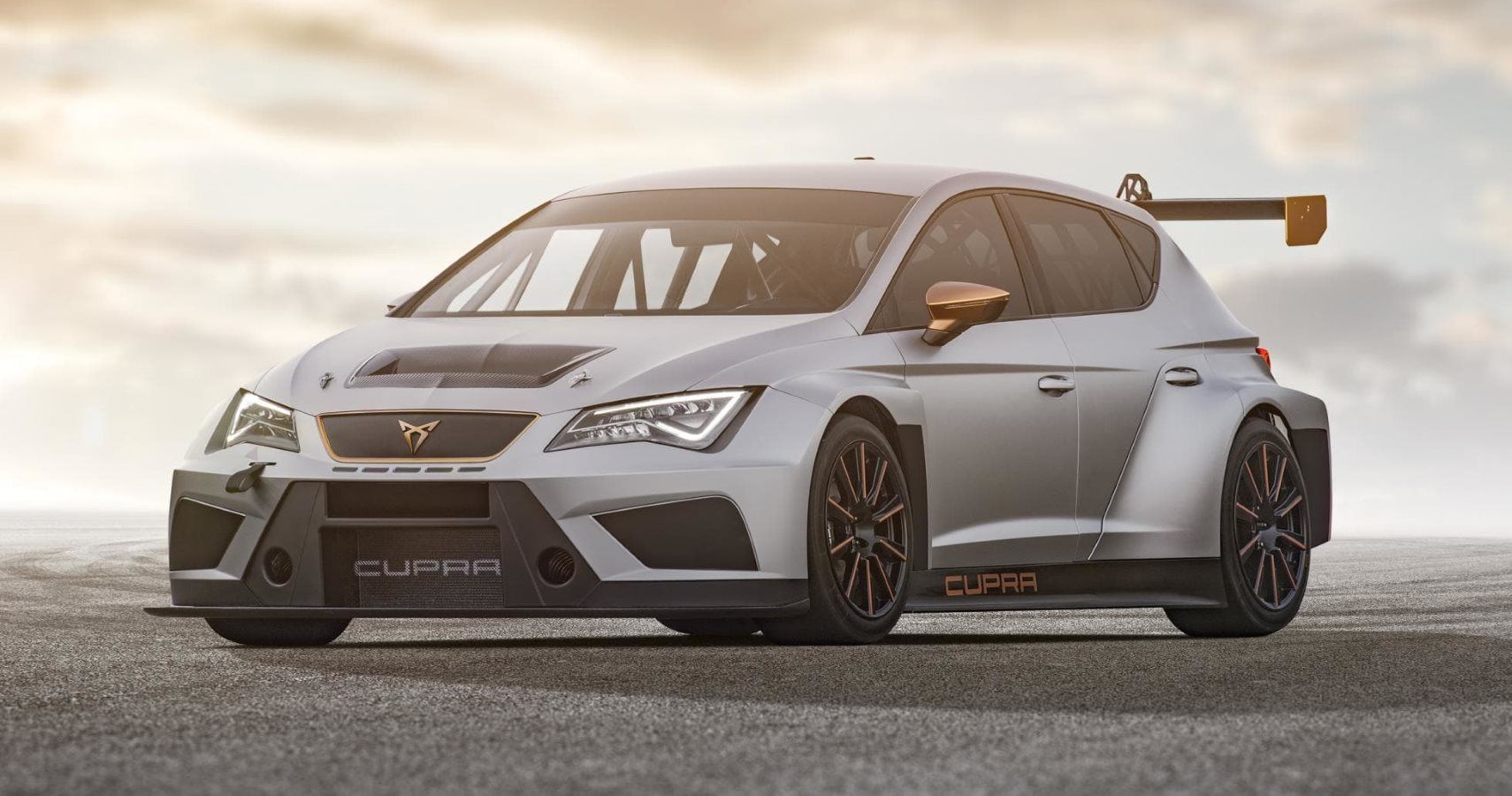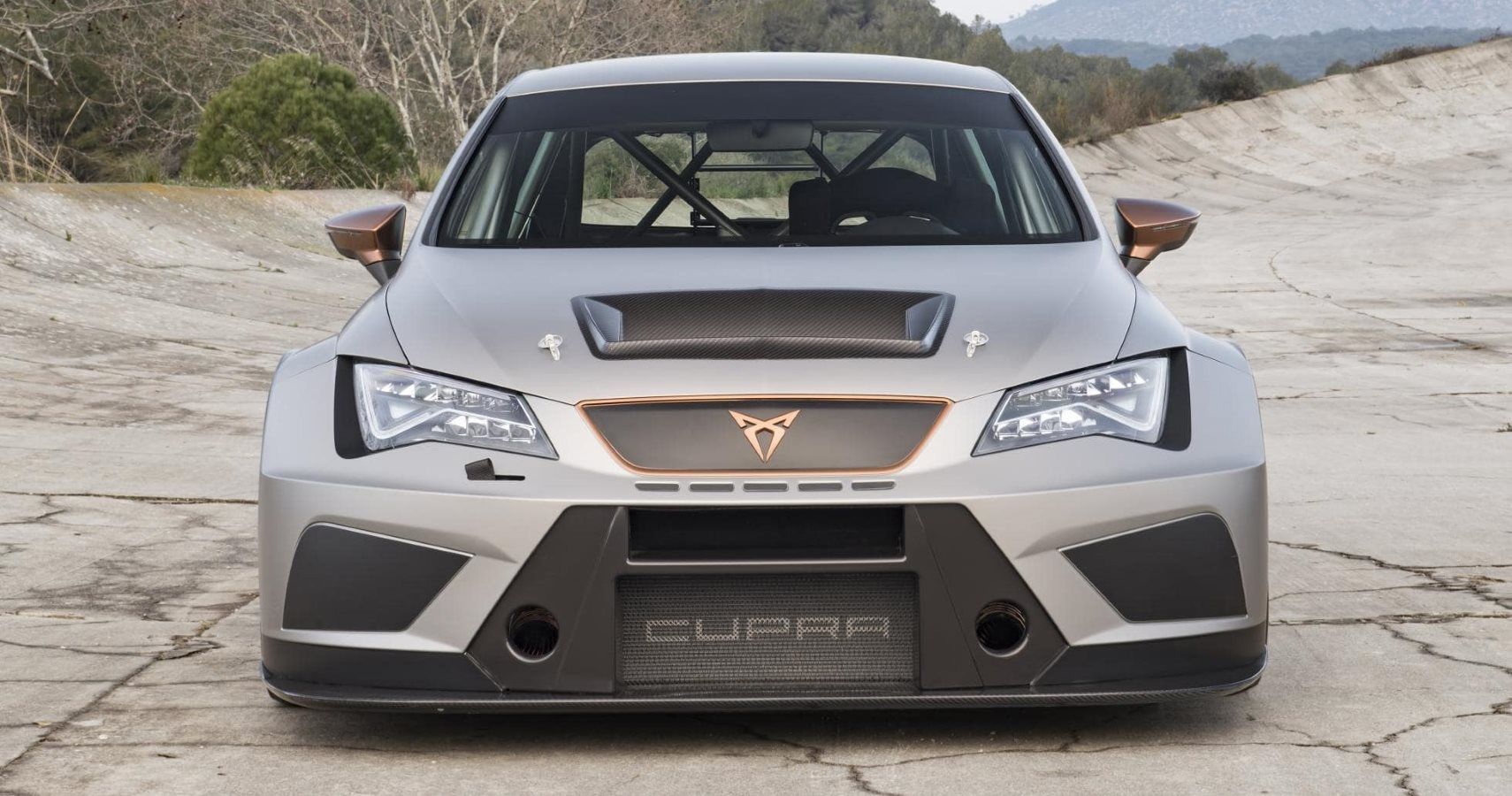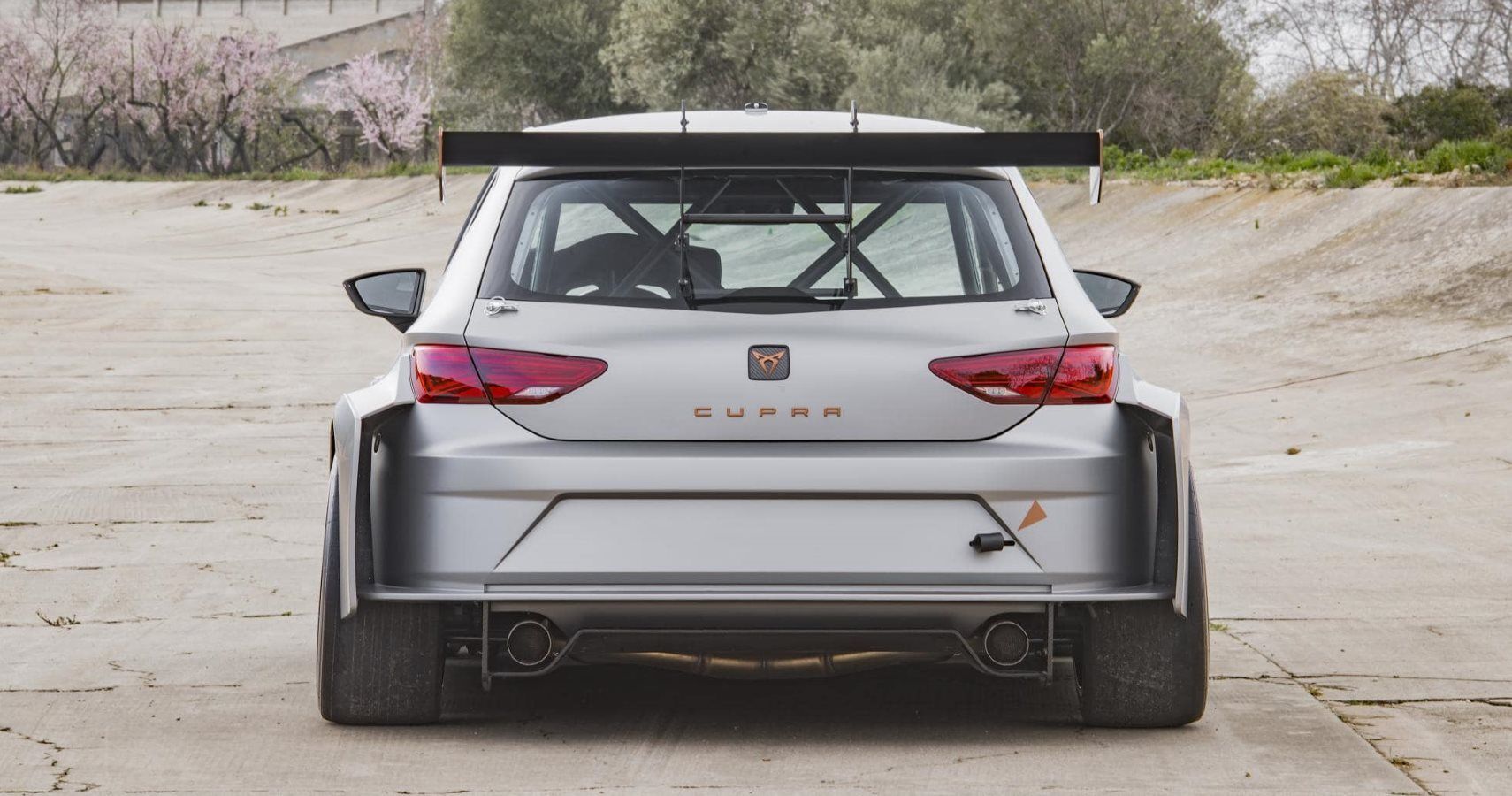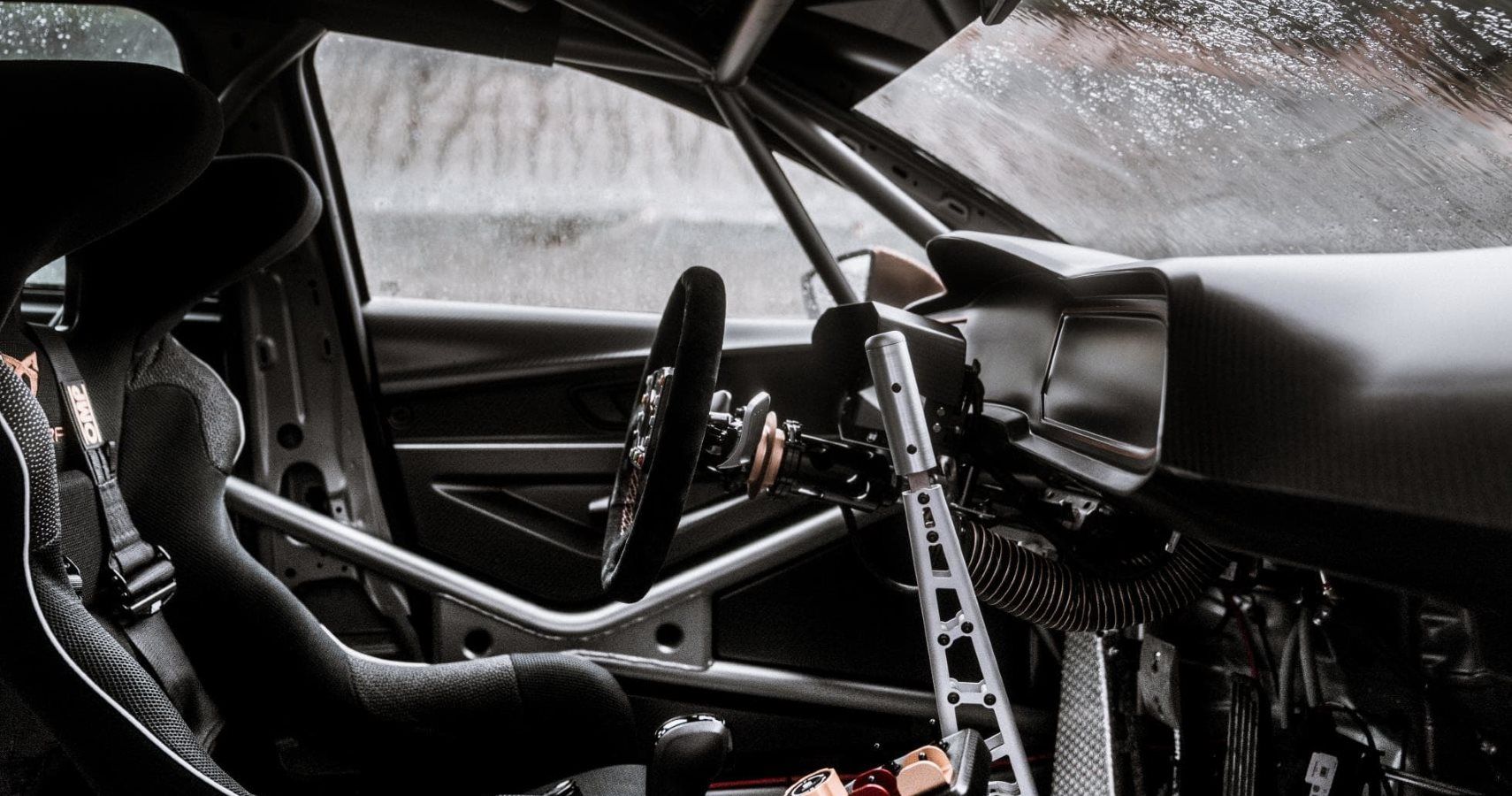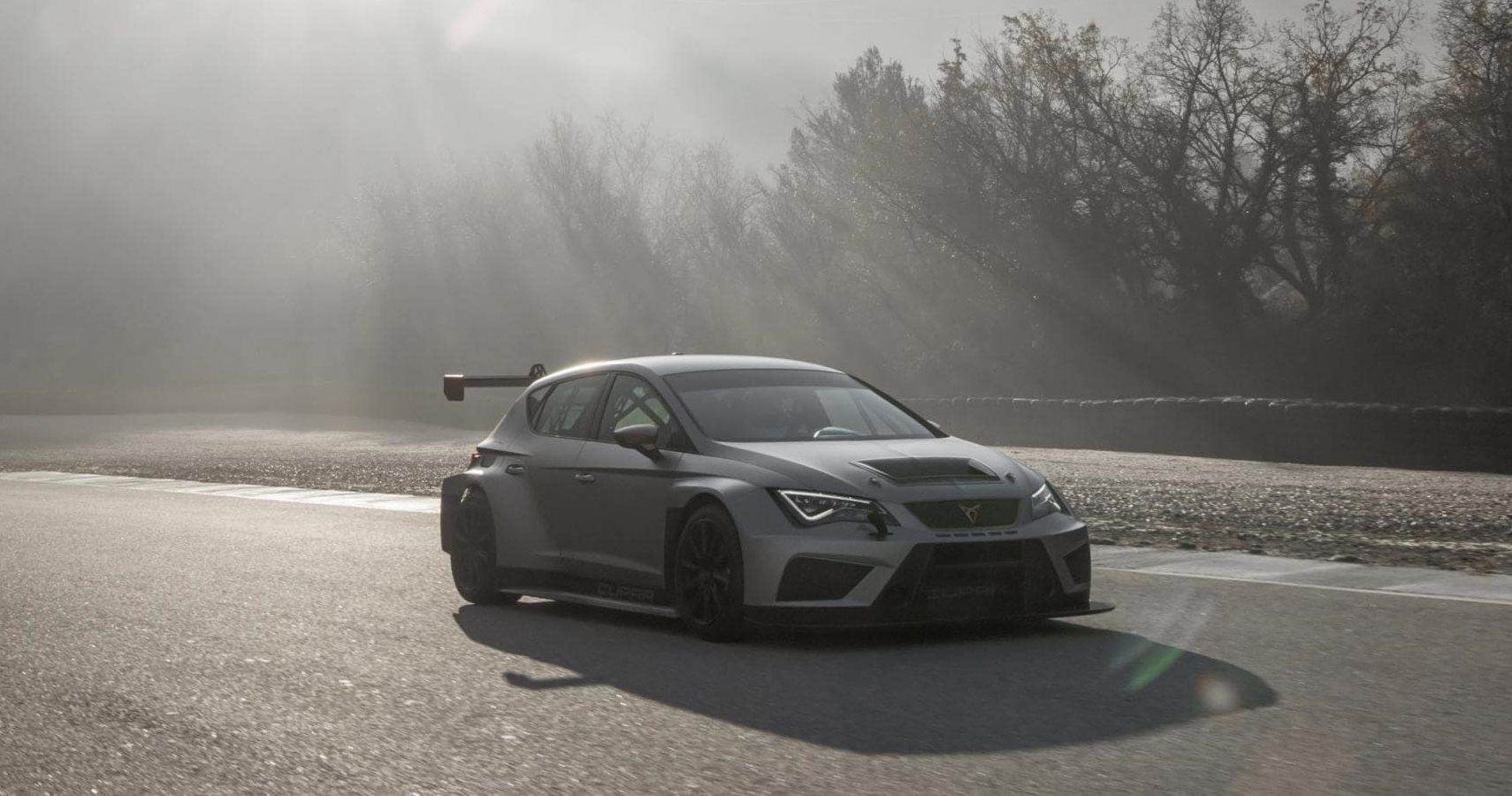Cupra is a relatively new brand when it comes to automobiles, so if you’ve never heard of them before don’t feel too bad. Previously the “Cupra” name was limited to performance versions of standard road cars produced by SEAT (Sociedad Española de Automóviles de Turismo), a Spanish carmaker owned by Volkswagen. Now, SEAT has spun-off Cupra to become its own “lifestyle” sub-brand, selling everything from electric-powered mountain bikes to carbon fiber bracelets.
But Cupra is still synonymous with performance. Case in point, the Cupra TCR. Built to comply with World Touring Car Championship regulations, it’s a purpose-built race car--as if that wasn’t already obvious from all the carbon fiber and the roll cage.
The Cupra TCR started life as a humble SEAT Leon--a small, 4-door family car that primarily sees sales in its native Spain. The Leon is built from Volkswagen’s modular MQB platform, which makes what happens next a lot easier.
As soon as Cupra gets their hands on a sacrificial Leon, it gets torn down to the base chassis and is then rebuilt into the race car it always dreamed of becoming. This process is hardly unique to Cupra--basically all the major players in the TCR racing series do the same thing. It helps keep costs way down in comparison to something like Formula 1 or Le Mans, where individual cars cost millions and racing teams are valued in the tens of millions.
Top Speed: 166 MPH
Horsepower: 350 HP
Breaking Distance (60-0 MPH): Unknown
0-60: 5.2 s
Quarter Mile:
TCR cars are not only cheap but also they’re recognizable, which is something that car manufacturers love. Every Formula 1 car looks the same, but a TCR car still looks like a Honda Civic, or in this case a SEAT Leon.
But we digress. With the Cupra TCR, the old 2.0-L TSI inline 4-cylinder engine is given a little bit of tuning and a whole lot of turbocharger until it produces a whopping 350 hp and 309 lb-ft of torque. Which is good in any car, but is also a requirement of the TCR racing series. Zero to 62 mph is done in 5.2 seconds on its way to a top speed of 166 mph.
Compared to some of the cars we’ve seen those numbers won’t blow anyone away, but the point of the TCR formula isn’t extreme speed--it’s a low-cost, easily recognized racing series that doesn’t limit the playing field to billionaires and corporations. It’s also a lot easier to keep track of a car that’s not blowing past you at a bazillion miles per hour.
The rest of the car is pretty much what you’d expect from something that’s been turned into a race car. About as much of the car as possible has been replaced by lightweight materials thanks to the extensive use of carbon fiber. The front splitter, side skirts, and rear wing are all carbon fiber, as is most of the bodywork. Big Radical vented discs fill each wheel rim with 6-piston calipers in the front and 2-piston calipers in the rear as per TCR requirements.
RELATED: VOLKSWAGEN GOLF GTI TCR TO RECEIVE POWER BOOST
Where the Cupra TCR starts to get interesting is in the transmission. The regular version comes with a standard 6-speed dual-clutch gearbox with paddle shifters--nothing to write home about, and something you could probably find on plenty of high-end performance cars already. But the other version comes with a SADEV six-speed sequential gearbox that adds $20,000 to the TCR’s price tag but weighs half as much as the dual-clutch.
Whichever option you choose says a lot about you as a driver.
What started out as a homely Leon interior has been completely gutted to install a racing-spec roll cage. Comfy seats, air conditioning, and even the sound system are all gone to make room for barebones carbon fiber racing seats and a big, jutting racing wheel. There is technically still a trunk, but it’s mostly occupied by a roll cage. It’s still possible to place your groceries inside but it’s a lot more difficult. The 24-pack of bottled water might have to ride on the roof.
Instead of all those creature comforts, the Cupra TCR comes with a fancy radio to keep you in touch with your pit crew, an onboard fire extinguisher system, and an LCD behind the steering wheel to tell you both how fast you’re going and how your car is holding up.
To take a Cupra TCR home will cost you about $106,000 depending on the exchange rate. That’s for the dual-clutch transmission model--for the fancy sequential transmission, you’ll need to shell out upwards of $125,000. At that price, you’re competing against luxury performance cars and even some low-end supercars.
But this isn’t a luxury car, its a racer. And as such, it should be compared with other racing cars. Unfortunately for the Cupra TCR, that comparison is both simple and somewhat negative. Since making its debut in the World Touring Car Championship Series in April, the Cupra TCR has yet to win a race. It’s had a second place finish as well as a few thirds, but otherwise, the TCR series has been dominated by Hyundai i30 Ns and Honda Civics.
There’s still the whole rest of the year for the Cupra TCR to make a name for itself, and everyone loves rooting for the underdog.

